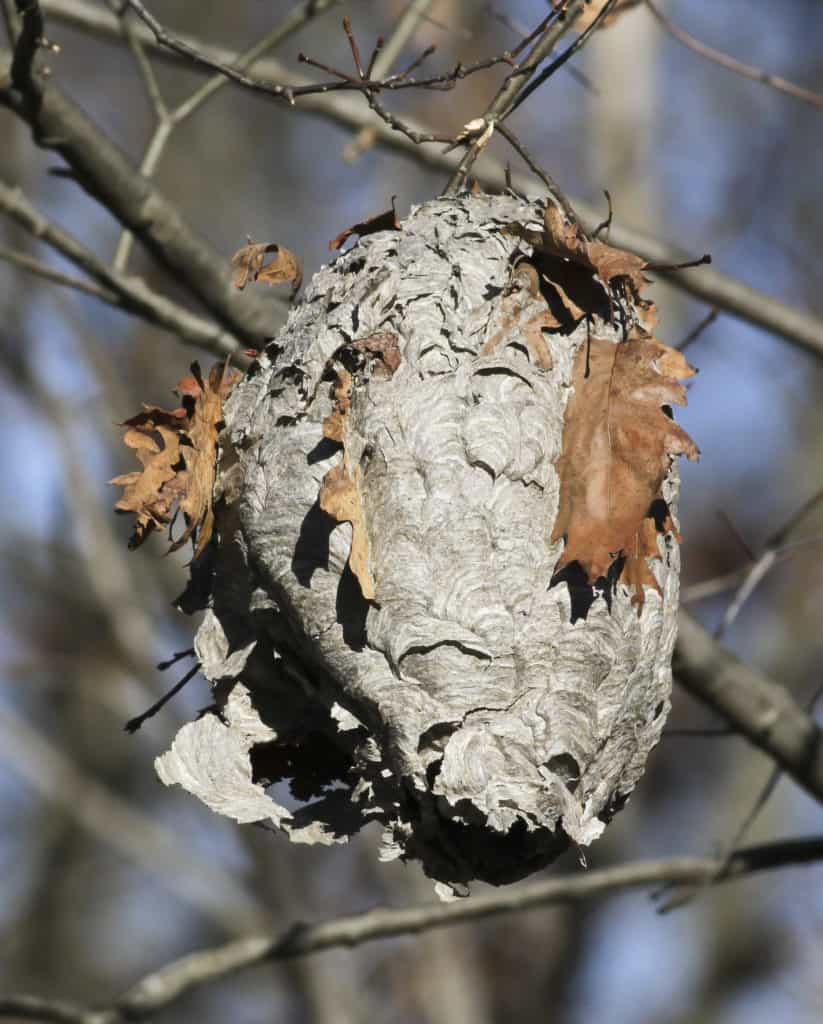Creature Feature

Nature’s Builders: Paper Wasps
By Wayne Bierbaum
Frequently in the winter, the nests of wasps are visible hanging in the bare trees. I tend to see a lot of them because their silhouette looks like an owl and I’m always looking for owls. The question I always have is “Are they still filled with live stinging insects? Are they still dangerous?” In seeking an answer to that question, I see that people are selling the nests on Etsy—hopefully without live insects.
Those large football-shaped nests are created by two different types of paper wasps, the bald-faced hornet and a species of yellow jacket. (The bald-faced hornet is actually a type of yellow jacket, not a true hornet. Hornets are larger than either of these species.) A paper wasp chews wood and other dried plant fibers, partially digests the material, and then a papery material is created and formed into a home for a developing nursery. Yellow jacket nests tend to be larger with more insects and appear more disorganized than the bald-faced hornets.
Both nests can contain hundreds and hundreds of stinging bugs. The nests start with just a single fertilized female that hid in some warm spot over the winter. In the spring, the female finds a spot to start a nest and after making a few egg chambers, the colony begins. By the end of the summer, the nest is large and the queen has started to lay eggs in each chamber.
The new female wasps will leave the nest and spend winter elsewhere in order to start a new colony. The male workers may leave the nest or stay but they will perish once there is a freeze.
Other species of yellow jackets make paper nests in the ground or in hollow spots, like a tree trunk. In the southern range, where there is no severe freezing, those colonies can continue to grow and have been recorded to have up to 100,000 individuals. The ground nesting yellow jackets in our area usually do not survive as a colony over winter.
The answer to the question about the danger of a hanging nest in winter time is that the wasps are most likely dead—but I will not be testing that theory. I do, however, feel more reassured about the occasional times I have accidently bumped into a nest.
